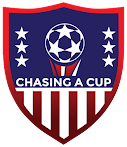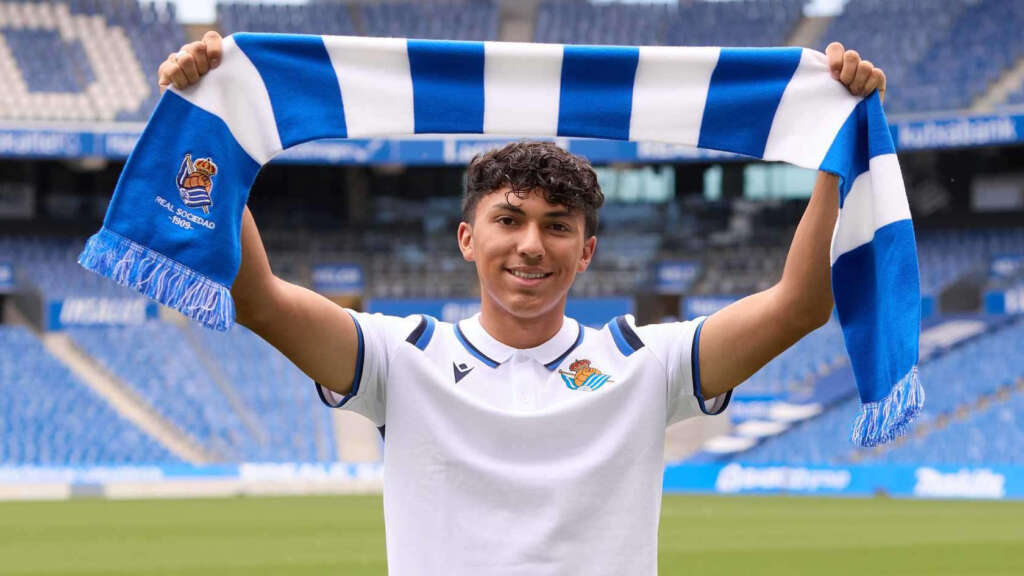

Club News
A breakdown of the u20 youth national team
Published
6 years agoon
By
David KerrToday officially marks one year away from the 2021 u20 World Cup which kicks off on May 20, 2021 in Indonesia. The u20 World Cup is the target event for the 2001 age group of the youth national team but will also feature the standout players from the 2002 and 2003 age groups. 2019 saw a very up and down year for the YNT’s as the u20’s made a quarterfinal run in the best YNT display that the United States has seen yet. This amazing display was followed up by the worst performance in youth World Cup history by the u17’s who managed to score a whopping one goal in three matches and crashed out of the World Cup with one draw and two very bad losses. The only other terrible youth World Cup performance I have seen was the 2015 u17 World Cup who also only managed one point in three games but still managed to yield Christian Pulisic and Tyler Adams (the age 1998 age group also produced Weston McKennie and Reggie Cannon by the way so remember that development is not linear).
With the previous u17 cycle being the 2002’s who will play a part in this u20 cycle fans are wondering how good this cycle will be. I think that the cycle is actually on track to be a very good team that has some real quality and may actually be as good as the previous u20 cycle. Even though the 2002’s are a very weak age group, the 2001’s are a very strong age group. I do not expect many 2002’s to carry over from the previous u17 cycle. I think we will see maybe three or four players carry over which is very common for a u20 cycle. I think this cycle actually has the talent that there was an A, B, and potentially even C team that they would be good enough to make it to the final in qualifying, we are that much better than every other team in the region for this cycle.
Today will be looking at each position in the u20 pool and breaking down who the top players are and who I expect to make this team in a year. Keep in mind that things change rapidly at this age group. There will be players who get hurt and fall off, there will be players who come into good form, and there will be players who hit a spell of bad form. Remember that Edwin Cerillo was not in the picture at all for the previous u20 cycle until he broke into the FC Dallas first team with around a month left before the u20 World Cup and then he ended up making the team. There could be a similar situation to happen in this cycle. But with that being said, let’s dive into the player pool.
Goalkeepers

The goalkeeper depth for the u20’s is the best that I have ever seen in a YNT. In my opinion, there are five goalkeepers who have potential to make the squad for this cycle: David Ochoa, Chituru Odunze, Luca Lewis, Damian Las, and John Pulskamp. Normally in a u20 cycle you see a goalkeeper play an age group up (a 2003 playing with the 2001’s) but the depth is so good for this group that this will not be a thing for the current cycle.
The starter for this age group is David Ochoa. David is by far the most talented keeper in the depth chart as he is very good at every aspect of his game and is exceptional with his feet compared to the other goalkeepers. David was the best goalkeeper who even managed to start in goal for two matches during the previous u20 World Cup in 2019. The last goalkeeper to be as talented as David Ochoa at the u20 level was Zack Steffen, and look where Steffen is at now. David has already won the USL Championship as a teenager and is the heir to the starting goalkeeper spot at Real Salt Lake.
The youth national team players who will be competing for the other two goalkeeper spots are Chituru Odunze, Luca Lewis, Damian Las and John Pulskamp. While I do not consider any of these four to be quite as talented as David Ochoa, I do think all of these players are truly exceptional prospects. In my mind, the top two are Chituru Odunze and Luca Lewis. Both Odunze and Lewis were called up to the recent camp that was supposed to take place in March and appear to be the guys that Anthony Hudson rate highly. Damian Las and John Pulskamp are the two other goalkeepers that I think should also be given a look because they are both great players and are good enough to tend the net at this level.
Top option: David Ochoa (Real Salt Lake)
In the pool: Chituru Odunze (Leicester City FC), Luca Lewis (Torino FC), Damian Las (Fulham FC), John Pulskamp (Sporting Kansas City)
Defense
Right Back

For this u20 cycle, right back is one of the weaker positions overall. The best youth national team option currently is Julian Araujo who will also likely be the captain of the team. Julian was a late injury replacement for the previous u20 World Cup and is one of the strongest locks for this age group. Julian told both his club and country that he will suit up for the u20’s instead of playing for the Olympic team (the u23’s) as he wants to be a leader for this cycle. Julian will be a rock defensively for the team and will be able to safely put out any fires.
After Julian is where the pool gets tricky as there is no player who could be considered a guarantee to make the team. Currently, all signs are pointing to Ian Hoffmann being the backup right back as he has been the only right back called up in all three u20 camps so far this cycle. Ian was also one of the recent top performers of the January camp which was the last time this group was able to meet.
The player who has the potential to jump Ian in the depth chart is Mauricio Cuevas who is the best right back in the 2003 age group. Mauricio is a standout at almost every level he plays in. When he was with the u17’s for qualifying last year he held his own playing a year up and when playing in the USL Mauricio looks even better. With a year to work on his game and physically mature, Mauricio could be one of the players who manages to play up a u20 cycle.
Top options: Julian Araujo (LA Galaxy), Ian Hoffmann (Karlsruher SC)
Young player to watch: Mauricio Cuevas (LA Galaxy)
In the pool: Cameron Duke (Sporting Kansas City), Joe Scally (NYCFC), Tayvon Gray (NYCFC)
Left Back

Unlike right back, the left side of the backline is loaded. With the USMNT left back depth being pretty depressing, this is the group who could realistically change that in the next two or three years. The youth national team top option is the easiest roster choice in this cycle, Kobe Hernandez-Foster. It is truly a shame that center backs emerge on a later timeline and forced Kobe to have to play as a center backs with the u17’s because watching Kobe play as a left back in mind blowing. The weakest part of Kobe’s game is defending 1v1 but this is something that will improve over time and is something most defenders struggle with (remember, Sergino Dest also struggled with this at the u20 World Cup and now he is wanted by Bayern Munich and FC Barcelona). This is the left back that the people who rage troll the Ussoccer social media accounts have been waiting for.
There are two other players who are competing for the second left back spot. The current backup is Travian Sousa who currently plays overseas at Hamburger SV. Travian is a very athletic attacking left back who like Kobe, glides down the touchline and can terrorize a defense. Travian is a player who may get his first team chance with the German leagues now using five substitutions in a match.
The other left back to watch out for is Jonathan Gomez. Jonathan is another top tier FC Dallas product. Just how good is Jonathan? There are quite a few people who actually think that Jonathan has an even higher ceiling than Kobe does and for good reason, Jonathan is one hell of a player. Jonathan is a better defender going forward and is just as good on the ball. Kobe is more athletic and is more effective going forward but both are elite left back prospects. When looking long term for the 2026 and 2030 World Cups, if neither have any major injuries then they are both guarantees to make the USMNT. Jonathan is behind Travian currently because he does have to mature physically to keep up at the older levels as he is a 2003 and the two year age gap does make a big difference at this level.
Top options: Kobe Hernandez-Foster (Wolfsburg), Travian Sousa (Hamburger SV)
Young player to watch: Jonathan Gomez (Louisville City FC)
In the pool: George Bello (Atlanta United), John Tolkin (New York Red Bulls)
Center Back

First we will take a look at the left center backs. For the first time in a u20 cycle, we have two actual left center backs which we have not had in a while. Both Leo Sepulveda and Bobby Pierre are left footed and prefer to play on the left side of the back line which is very uncommon for American center backs. The best out of the two is Leo Sepulveda and this is because Leo is a much better player playing out of the back. Leo’s downside is that his decision making defensively needs to improve and he still gets stuck in. Bobby however is not as good possessing the ball but is a better overall defender but I still prefer to have Leo in the 11. Leo will have a year to develop as a defender now that he is officially moved up to the Salmanaca first team. Bobby Pierre also brings u17 World Cup experience where he represented Haiti and was the sole reason that Haiti did not spend all three games constantly picking the ball out of the back of their net.
The starter on the right is already locked up for the youth national team. When you make an appearance for a top ten Premier League side when they aren’t having an injury crisis then you get an immediate locked in starting role. Owen also fits the style of play perfectly as this team will look to play a more possession style as he is good enough on the ball that Wolverhampton also play him as a 6. The backup currently is George Campbell. George is an absolute unit and a very good defender. However, playing out of the back is not George’s strong suit which is the only thing that separates him and Otasowie. If there is any injuries to either George or Owen, then there are quite a few reserve options who will be able to step in for the team.
Top options: Owen Otasowie (Wolverhampton), Leo Sepulveda (SD Salamanca), George Campbell (Atlanta United), Bobby Pierre (Real Salt Lake)
In the pool: Jacob Akanyirige (San Jose Earthquakes), Nico Carerra (FC Dallas), Jonathan Tomkinson (Norwich City FC)
Midfield
Defensive Mid

In my opinion, the 6 is the strongest position in the u20 youth national team pool. The reason for this is because both Johnny Cardoso and Taylor Booth are phenomenal prospects. For the longest time, Taylor Booth was a very safe starter for the 2001 age group and then out of no where Gregg Berhalter finds Johnny Cardoso in Brazil and Taylor no longer has the spot locked up. Realistically, these two are pretty even overall and it will boil down to who is on a bigger hot streak at the time. The biggest difference between the two is that Johnny is better defensively while Taylor is a better distributor. When looking to out possess the other team and dominate the midfield, both of these players are very good options.
The depth at the 6 is also very good for the youth national team. The two main options that will be given a look in this cycle are Leon Flach and Danny Leyva. Both Leon and Danny were called into the March camp so they are both getting the looks they deserve. Danny may not be ready physically for the u20 level and could look like a fish out of water like he did in the u17 World Cup. To succeed at the u20 level Danny would need to be paired with a physically imposing center mid… like Tanner Tessmann. Because Leon is two years older, I believe he would be the first player taken if either Johnny or Taylor are hurt.
Top options: Johnny Cardoso (Internacional), Taylor Booth (Bayern Munich)
Young player to watch: Danny Leyva (Seattle Sounders)
In the pool: Leon Flach (St Pauli)
Center Mid

The 8 is another position that excites me but not quite as much as the 6. I am very excited about the players in this position but they don’t have any players quite at the level of Johnny Cardoso or Taylor Booth. The best option at this position in my opinion is Tanner Tessmann. Tanner was someone I had written off in this cycle when he announced he was going to Clemson and quickly got burned when he signed with FC Dallas, was thrown into the starting lineup in the first two matches, and was fantastic in both appearances. Tanner can cover ground with ease and has a great passing range and will be essential in controlling the midfield at the u20 level.
The other option I believe separates from the pack of the 8’s is Cole Bassett. Cole is one of the many underrated prospects to come out of the Colorado Rapids. Cole, like Tanner is a very physically gifted player who covers ground well. The difference between Cole and Tanner is that Tanner is better on the ball, has a better passing range, and is more dangerous in the attack. However, if Cole needed to sub in or if Tanner got hurt then the u20’s would still be fine and I would be confident that they could steam roll almost any team they play.
The reserve options are very notable just because of how much boom or bust potential both have. The first reserve option is Bryang Kayo. Bryang is more physically gifted than both Tanner and Cole but is not quite as good on the ball as either. However, in Germany Bryang will be pushed harder to polish his skills and could very well play his way into the roster.
Moses Nyeman is the other reserve that I think has a chance to make this team. Moses is not like the other three 8’s on the youth national team because he is not the most physically gifted player (he is 5’6 125 on a good day). However, Moses is much better on the ball than the other three and it is not even close. Moses also has bite and will make the hard tackles when needed as shown in his Loundon United matches. If Moses can hit the weights and start to make some appearances for DC United (play the kid Ben Olsen!) then he could easily jump into the roster, the kid has that much potential even as a 2003.
Top Options: Tanner Tessmann (FC Dallas), Cole Bassett (Colorado Rapids)
Young player to watch: Moses Nyeman (DC United)
In the pool: Bryang Kayo (Wolfsburg)
Attacking Mid

Attacking midfield is another very strong position for theyouth national team. This has the potential to be the strongest position in the pool but also is not very likely to as Gio Reyna is on track to skip the u20 level and head to the USMNT. At this point you all know who Gio Reyna is and the qualities he brings so I don’t need to say why he is the starter here. But, with the u20 World Cup, the Gold Cup, the Olympics, and potentially World Cup Qualifiers there is going to be a lot of games jam packed into the summer of 2021. With Gio not just being a starter for the u20’s but the Olympic team and the USMNT then there will have to be competitions he misses out on.
Should USMNT fans have to worry about the u20’s even without Gio Reyna? Not at all, and that is because of Jose Gallegos. Jose Gallegos is this u20 cycle’s edition of Richie Ledezma, the kid who popped up out of no where playing in the USL with loads of talent. However, Jose is even more unique than Richie because he did not actually play in the Development Academy. Jose should serve as an example to players out there that you don’t have to play in the top tier youth leagues to end up as a professional soccer player. If there is a USL team near you, give them a chance to help make your dreams come true! Jose has grit, he has the skill, he has the vision, and he has the playmaking ability in his gene’s. This is a kid who should be a real break through at the u20 World Cup.
Assuming Gio does not play with this youth national team, there will need to be a backup for Jose. In my opinion, that backup should be Thomas Roberts. Thomas has almost all of the skill as Jose but is not quite as athletic. Thomas has consistently produced at every level he has played at and was one of the standouts in the early parts of this u20 cycle. When Paxton Pomykal and Jesus Ferreira move on from FC Dallas, Thomas should fill in quickly and effectively.
There is one other player who could become part of the player pool but I am unsure of the actual possibility of this happening. The player I am talking about is Efrain Alvarez. There are a couple reasons for him to join the youth national team. The first is would Efra leave the Mexico setup to play for Anthony Hudson? I am pretty doubtful of this because of Anthony Hudson’s not so great coaching track record and the ideal coach for Efra not being involved in the USA setup. Another reason is would Efra be willing to file a one time switch so quickly after making a u17 World Cup final run with Mexico and permanently seal who he plays for? If he does then does he not feel like he has a future in the Mexican national team system? If Efra feels valued, then why would he file a one time switch and leave after being given everything he wants by the Mexico federation? The only thing that I could see not making Efra debate switching is him not getting called into the early Mexico u20 camps. But at the same time of not getting called into the Mexico u20’s, would Efra make the USA u20’s who are a lot more talented and have a lot more depth at his position? If he wouldn’t then there is no chance he files the one time switch and moves into the USA setup. I think there is a very good chance of convincing Efra to switch long term, but I do not think it would be smart for Efra to switch so early until Mexico has completely closed the door on him.
Top Options: Gio Reyna (Borussia Dortmund), Jose Gallegos (San Antonio FC)
Young players to watch: Caden Clark (New York Red Bulls), Johnny Perez (LA Galaxy)
In the pool: Thomas Roberts (FC Dallas), Matteo Ritaccio (Liverpool), Marcelo Palomino (Houston Dynamo)
Unlikely dual national: Efrain Alvarez (Mexico, LA Galaxy)
Attack
Wingers

The reason I listed Gio Reyna with the attacking midfielders is because the wingers are exceptionally talented for this cycle. Tab Ramos’ mentality for the youth national team was that you should always want to play as many good player as you can, even if it means one is not in his strongest position but can still benefit the team. With both Uly Llanez and Konrad De La Fuente in this group, the wings are going to be fast, skilled, dangerous, and unstoppable.
Uly is one of the hottest USMNT prospects currently and I think he will end up being with the team being in a similar situation that Tim Weah was with the last group. If Uly is given the chance to play with this team, Uly will be a force and will quickly draw the eyes of the world. Konrad is a player with a lot to prove this cycle. I actually came away impressed Konrad after the last tournament and this is an opinion that is not shared with many. The reason for this is because Konrad held his own and was still confident on the dribble and beating defenders as a 17 year old in a u20 World Cup. With two more years of development at La Masia, Konrad will be playing with a chip on his shoulders and I think Konrad will be in for an electrifying tournament.
The third winger that I am taking for this youth national team is Cameron Harper. Cam is not as technically sound as both Uly and Konrad but makes up for it by being ridiculously fast. Cam will be faster than any full back at this level and has the dribbling ability to beat defenders easily. Cam could make his first team debut for Celtic before the u20 World Cup happens and has been the top standout with the u20’s early in the cycle so far. If Uly is withheld from the team then expect Matko Milijevic to step in. Matko will bring the flair you often see from South American wingers who were born with a ball at their feet.
Top options: Uly Llanez (Wolfsburg), Konrad De La Fuente (FC Barcelona), Cameron Harper (Celtic)
Young player to watch: Dante Sealy (FC Dallas)
In the pool: Matko Milijevic (Argentinos Juniors)
Strikers

This is the only weak spot in the youth national team. The best player in this group is Ricardo Pepi who I don’t think is actually ready for the u20 level because he did not have a very good u17 World Cup. However, compared to the other options Pepi is by far the best at connecting with defenders and being clinical in front of the net. Ricardo Pepi is a top tier striker prospect but as a 2003 he will be playing an age group up against much older and stronger center backs who will be better than almost anyone he will face off against in the MLS.
The other striker I would take for this youth national team is someone who may not actually be a striker long term and that is Indiana Vassilev. Indy can literally play in every position and if you have not watched a youth world cup, versatility matters when choosing a 21-man roster. Indy has played as a 6, 8, 10, winger, and striker over the last three years and has excelled at every position. However, many fans at Aston Villa believe that his best position is either up top as the 9, or on the left wing. Due to Aston Villa being one of the only clubs to never release film of their youth teams anywhere online, we will have to take the club’s die hard supporters word for where he currently plays. Indy also made his Premier League debut as a 10 and made another appearance as a striker. Indy’s versatility to play six different positions will be key for this team.
The other striker options are all less than thrilling for the youth national team. The best of the group is Charlie Kelman who has been doing well with Southend United. The fourth option would be Matthew Hoppe with Schalke and the last option before there is a massive drop off is Johan Gomez at Porto. None of these players excite me and I don’t see any of them having a USMNT future but because the roster depth is so thin at this position, all are still in the running to make this team.
One player could turn this position into a strength but in my opinion is a pipe dream and that is Folarin Balogun. Folarin is on track to be a first team player for Arsenal as early as next season and has been a prolific goalscorer for the Arsenal academy at every single level. However, all signs are pointing to Folarin leaning towards England as he does not have any photos on his Instagram from when he played with the Ussoccer u18 YNT and he also only follows one person who has any ties to Ussoccer and that is Owen Otasowie (who is a English dual-national). Folarin would turn the USA into a powerhouse at this level but that is not looking like it will happen.
Top options: Ricardo Pepi (FC Dallas), Indiana Vassilev (Aston Villa)
In the pool: Charlie Kelman (Southend United), Matthew Hoppe (Schalke), Johan Gomez (FC Porto)
Unlikely dual-national: Folarin Balogun (Arsenal)
The ideal 21-man youth national team roster for this age group

The idea of this youth national team is to be a possession based team with attacking prowess similar to the previous u20 World Cup team. Like the last u20 cycle, this group should make teams play their game. This team should control the tempo and momentum of every game they play in no matter who they are lining up against. So what should the expectations be with this group? If at full strength, this team should be expected to make at least a semi-final run. Anything less would be a disappointment. If the youth national team does not have Gio and Uly, then they should still be expected to make it to the quarterfinal like the three previous u20 cycles have done.
So how does this youth national team compare to the previous cycle? The defense overall is not as solid as the last backline of Chris Gloster, Mark McKenzie (or Aboubacar Keita who filled in), Chris Richards, and Sergino Dest. The midfield however is a much better group than the last cycle. The last group kept possession well but struggled to turn possession into goals and that won’t be the case with this group. The 2019 midfield was also relatively easy to play through (see the quarterfinal against Ecuador) which won’t be the case with this team. The offenses of both teams are about equal. The previous u20s had better strikers but this group has better wingers so it balances out. If both youth national teams played each other, the score would be just about even. There is one difference between the two cycles and that is depth. The current u20 cycle would be able to qualify in Concacaf with their c-team. In fact, USA already beat the Mexico u20’s with a majority second and third choice roster (some players in the camp are realistically not even good enough to be third choice players).
So how would this group do against the u20 teams who were not developed in the 10-month season DA? This youth national team would likely slaughter all of them except for the 2007 World Cup team which contained players like Jozy Altidore, Michael Bradley, and Freddy Adu. The 2007 would only lose by 2 goals most likely, the gap in level from what the USA used to developed compared to now is that big, things are changing. Every other u20 team the USA has sent out would get fleeced by 3 or 4 goals at least by this side, including the 2015 and 2017 teams who both made quarterfinal runs. The future is bright.
If you enjoyed this article make sure to give me a follow on twitter (@dkerr0118) so you can be kept up to date on more content like this about our youth national team!
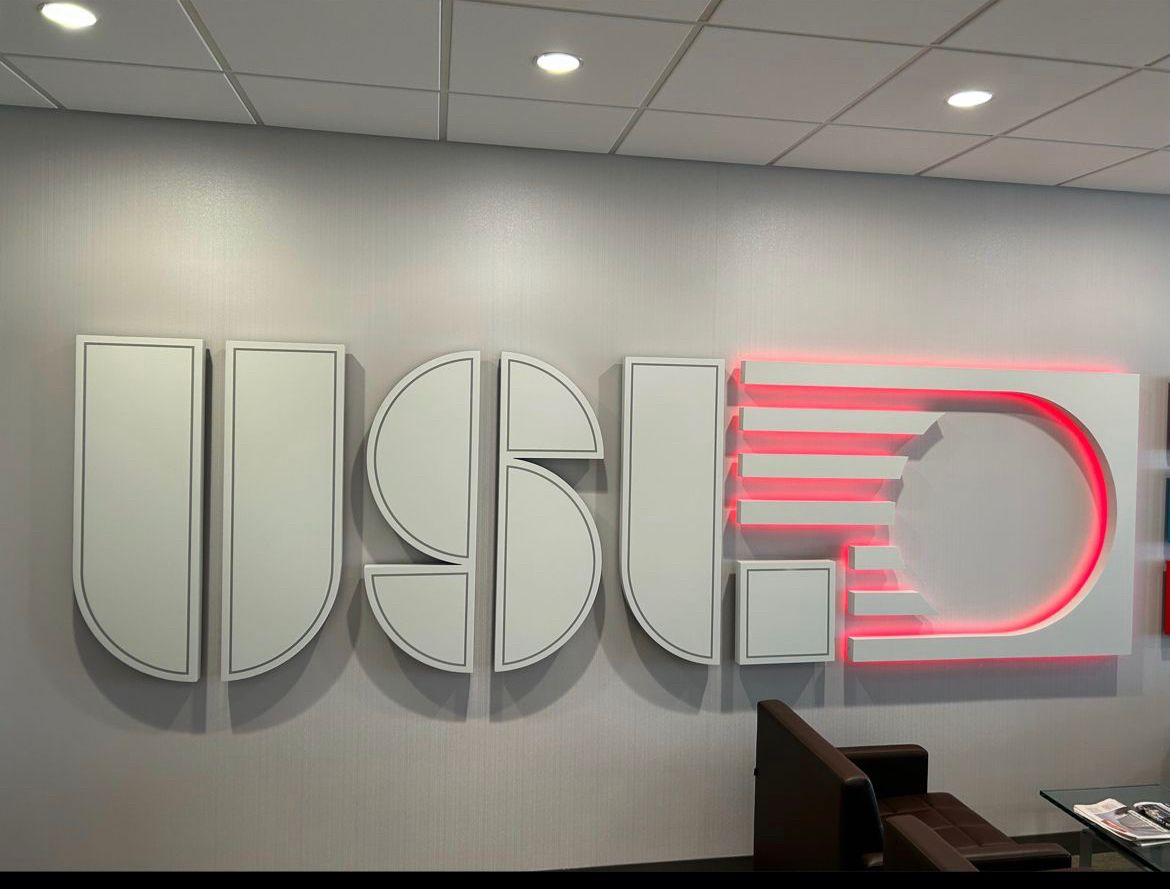
USL made national headlines when they announced on February 13th, 2025, their plans to launch a Division One league, followed by the announcement of promotion/relegation on March 19th for the new Division One league, the Championship, and League One. If sanctioned by US Soccer, USL Division One would be of equal status to MLS and compete for the best major soccer league in the U.S. The implementation of promotion/relegation in the USL would become the first in the U.S. and test the question asked for many years, “would pro/rel work in the U.S.” USL HQ informed the public that they planned to have the inaugural season of Division One during the 2027-2028 season with promotion/relegation beginning in 2028.
Until November 3rd, with the announcement of Tony Scholes being hired as the President of the Division One, only three teams have applied for membership to the inaugural season of Division one: Louisville City, North Carolina FC (who announced at the time of the Scholes news that they would fold until the launch of Division One), and Pittsburgh Riverhounds. There has been a rapid expansion of teams in the already existing leagues since the two announcements. Teams joining League One are: Fort Lauderdale FC (2026 debut), New York Cosmos (2026 debut), Port St. Lucie SC (2027 debut), Sporting Cascades FC (2026 debut), and Rodeo FC (2027 debut). Fort Wayne FC and Sarasota Paradise would also be joining League One from League Two (2026 for both teams). For the Championship, Reno, NV will once again have a team planned for a 2027 debut. Along with those teams, USL is actively working to expand to other markets. The markets and partners they are looking at are Brevard County, FL (Space Coast Pro Soccer), Riverside, CA (Riverside Pro Soccer), Brownsville, TX (City of Brownsville), Winter Garden, FL (Central FL Pro Soccer), Santa Rosa, CA (City of Santa Rosa), and Pensacola, FL (City of Pensacola).
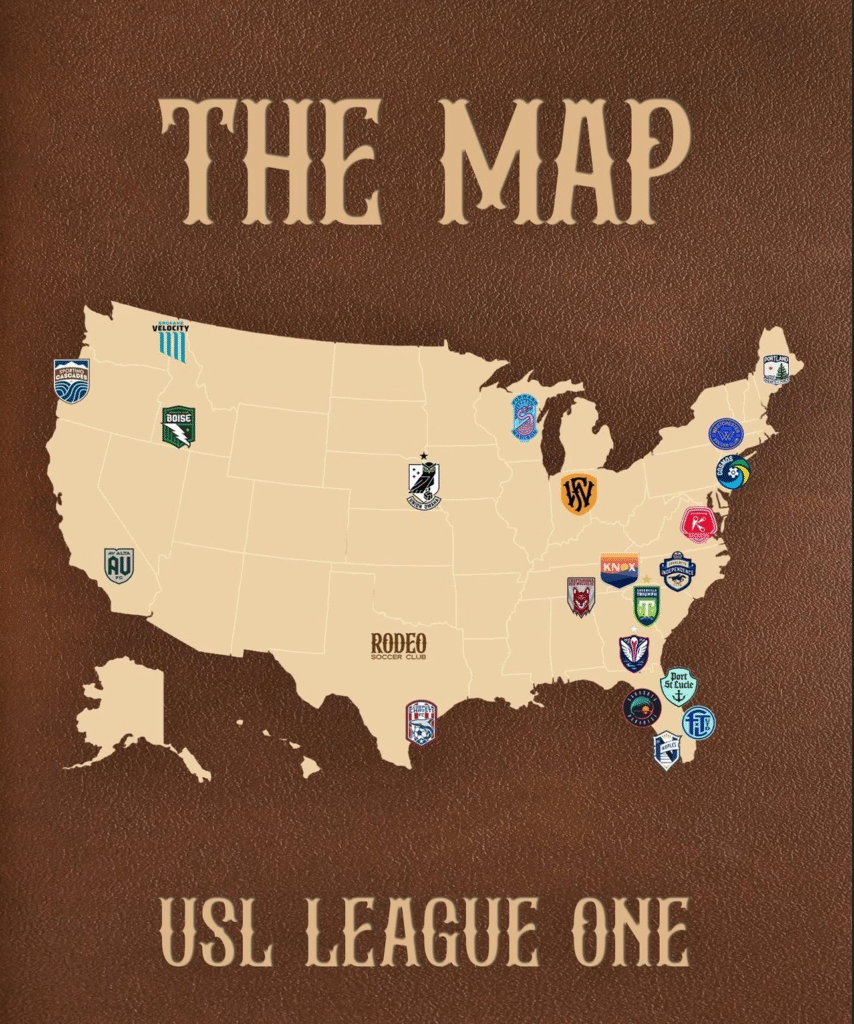
Along with these recently announced teams and partnerships, USL has teams joining the organization just in time for promotion/relegation that were announced prior to the February and March news. Starting with League One, these teams include: Corpus Christi FC (2026 debut) and Athletic Club Boise (2026 debut). As for the Championship, they will be adding Brooklyn FC (2026 debut), Sporting Jax (2026 debut), Atlético Dallas (2027 debut), Milwaukee Pro Soccer (TBD), USL Pro Iowa (TBD), Buffalo Pro Soccer (TBD), and Ozark United FC (2027 debut), while Santa Barbara Sky FC (2027 debut) would replace Memphis 901 FC.
Other than that, news on the Division One and promotion/relegation had been quiet until USL snatched Tony Scholes from the English Premier League. Tony Scholes will be the President of Division and help with the implementation of promotion/relegation. Scholes served as the chief football officer of the EPL and will join USL at the end of the EPL season. As of November 15, 2025, USL Division One has not been sanctioned as a division one league by US Soccer. The hiring of Scholes indicates that they are confident this new league will get approved or they have already been told it will, behind closed doors. The fact that we have not heard news on what the promotion/relegation format would be, and Scholes task would be to help implement it could mean that USL has not come to a decision on one. Since we do not have any ideas on what the format could be, I want to provide a possible option that they could go with.
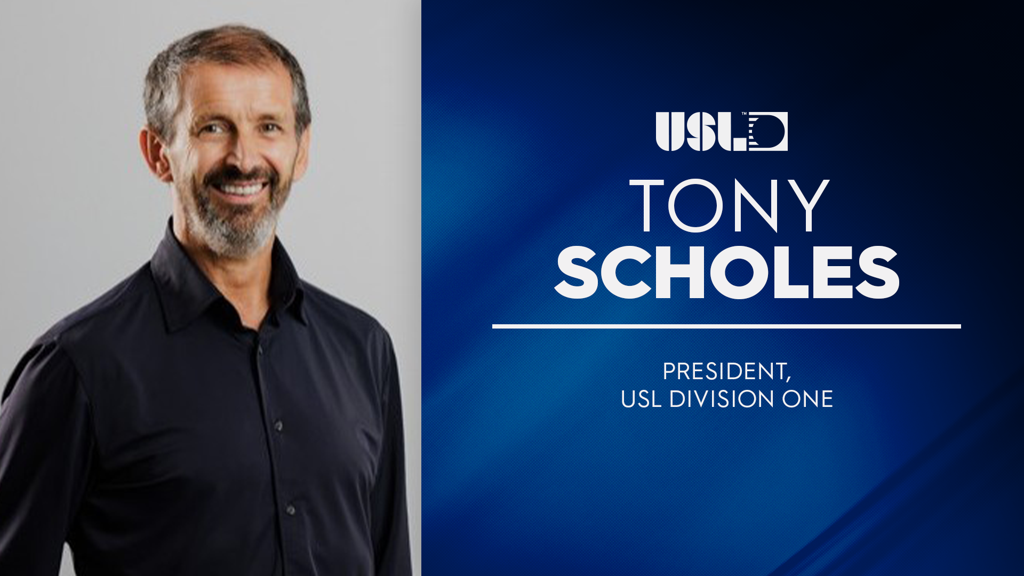
One of the biggest questions people have had since the USL announced promotion/relegation was how they would tie it to the playoffs. There is an option they could do, but it would result in only having one playoff. USL would have a playoff for Division One, but they would eliminate the concept for the Championship and League One. It might not be the most popular idea here in the U.S., but the main goal for the lower leagues is to get promoted, not to win a trophy. They would retain the league title for those two leagues with the winner being the team with the most points at the end of the season, just like how it is in the European leagues. The purpose is to create fairness for the top performing team(s) in the two lower leagues and reduce confusion. If there is a need for a playoff format, they could adopt the format the Bundesliga uses where the 16th best team in the first division and the 3rd best in the second division face-off in a two-leg match to see who would be in the first division the following season. The other option is the Championship concept, where the teams who finished 3rd through 6th in the table compete in a promotion playoff. The semi-finals are two-leg matches while the final is a single-leg match. The winner is promoted to the EPL. The execution of promotion/relegation must be done perfectly to retain fans, gain fans, prevent confusion, and be entertaining.
USL already has a division one league with their women’s Super League, who is competing against the NWSL. Currently, the S League has only nine teams (Brooklyn FC, Carolina Ascent FC, Dallas Trinity FC, DC Power FC, Ft. Lauderdale United FC, Lexington FC, Spokane Zephyr FC, Sporting Jax, and Tampa Bay Sun FC) to the NSWL’s 14 teams (3 teams in the works). The Super League will be adding an additional nine teams (Athletic Club Boise, New York Cosmos, Ozark United FC, Buffalo Pro Soccer, Chattanooga Red Wolves FC, Forward Madison FC, Indy Eleven, Oakland Soul SC, and USL Palm Beach) with all but three to have their inaugural season to be determined. What makes the S League unique from the rest of the soccer leagues in the U.S. is that they use a fall-summer schedule. Competing against a top five women’s league in the world is a tall ask, but it shows the ambitions of USL.
They are also willing to take risks by voting to pass promotion/relegation for the men’s league and have a fall-summer schedule for the S League. If the S League schedule format proves successful, it stands to reason that they would move the men’s leagues to the same schedule. It would also avoid the organization from having to fight MLS for viewership when the leagues are in play, especially when they launch a direct rival and are at their most ambitious point in their history. The same can be done for the S League if promotion/relegation is successful for the men. USL can start establishing lower women’s leagues and introduce promotion/relegation to the women’s game here in the U.S.
Many would say USL still stands no chance at competing against MLS, even with promotion/relegation and having a division one league. That is the case when you look at the quality of the players is finance, but that is the reason why the USL made these decisions based on the reports prior to the announcements and afterwards. Promotion/relegation and the introduction of a division one league could see an increase in investors. We are already seeing that with the likes of Gio Reyna joining Fort Lauderdale as an investor, BellTower Partners investing into USL, Sofia Huerta and Kasey Keller joining the Athletic Club Boise ownership group, and the Chickasaw Nation becoming an investor of the OKC for Soccer just this year alone. Then there is the expansion fee for MLS, MLS Next Pro, and the USL leagues. MLS charges an astounding $500 million! Yes, the money is used to construct a proper stadium, acquire players, etc., but at this point it will discourage many from purchasing a franchise license. MLS currently only has two leagues and one of them is advertised as a development league to prepare for MLS. The expansion fee for an independent team to join MLS Next Pro is unknown, but Sports Business Journal reported in 2024 that it is significantly cheaper than the USL Championship. The fee to join the USL Championship is $20 million while League One is only $5 million. These two fees are significantly lower than MLS and that will be more appealing to potential owners, but unlike the MLS fee, it is not enough for a stadium, training grounds, and players. As for what the fee is to join USL Division One, that is unknown at the moment.
I highly recommend reading the ESPN article by Jeff Carlisle titled “Will USL’s Move to Pro-Rel Change U.S. Soccer, Threaten MLS?” In there, Carlisle discusses the reasons behind the decision and that it is mostly financial. For example, a USL spokesperson said they expect to see an increase in commercial revenue by 15% to 30% due to promotion/relegation. Also, the former owner of San Diego Loyal lost $40 million in 4 seasons. As for the reaction from MLS, we have not heard one yet. The only possible reaction we have seen from them is what the former MLS Next Pro president, Charles Altchek, told to Backheeled back on March 6th, 2025. In the interview, he told them they aim to have 40 to 50 teams and a possible second league with one of the MLS Next Pro leagues being a second division, putting it in direct competition with USL Championship. The biggest question is, whichever league that is, can compete for fans? Due to the Apple TV deal, we currently do not have the ratings of MLS Next Pro. The closest idea we have is the attendance, which is 5,580 for USL Championship per match to MLS Next Pro’s 3,361, according to Transfermarkt. Unlike the attendance, the viewership for USLC is much higher where the season premiere match had 453,000 viewers. MLS Next Pro’s massive expansion plan announcement date was either a coincidence, or MLS got word USL’s promotion/relegation implementation with the division one news, and this was their response. I will let you come to your own decision.
It seems, as of right now, it appears MLS will sit back and wait to see how the USL’s Division One and promotion/relegation will play. Division One and promotion/relegation will either be successful for USL and lead them to the financial success they are hoping for or lead to the possible collapse of USL. American sports fans are not the only ones keeping their eyes on USL now, but the rest of the soccer world is after their two massive news. The coming years are going to be exciting times for American soccer!
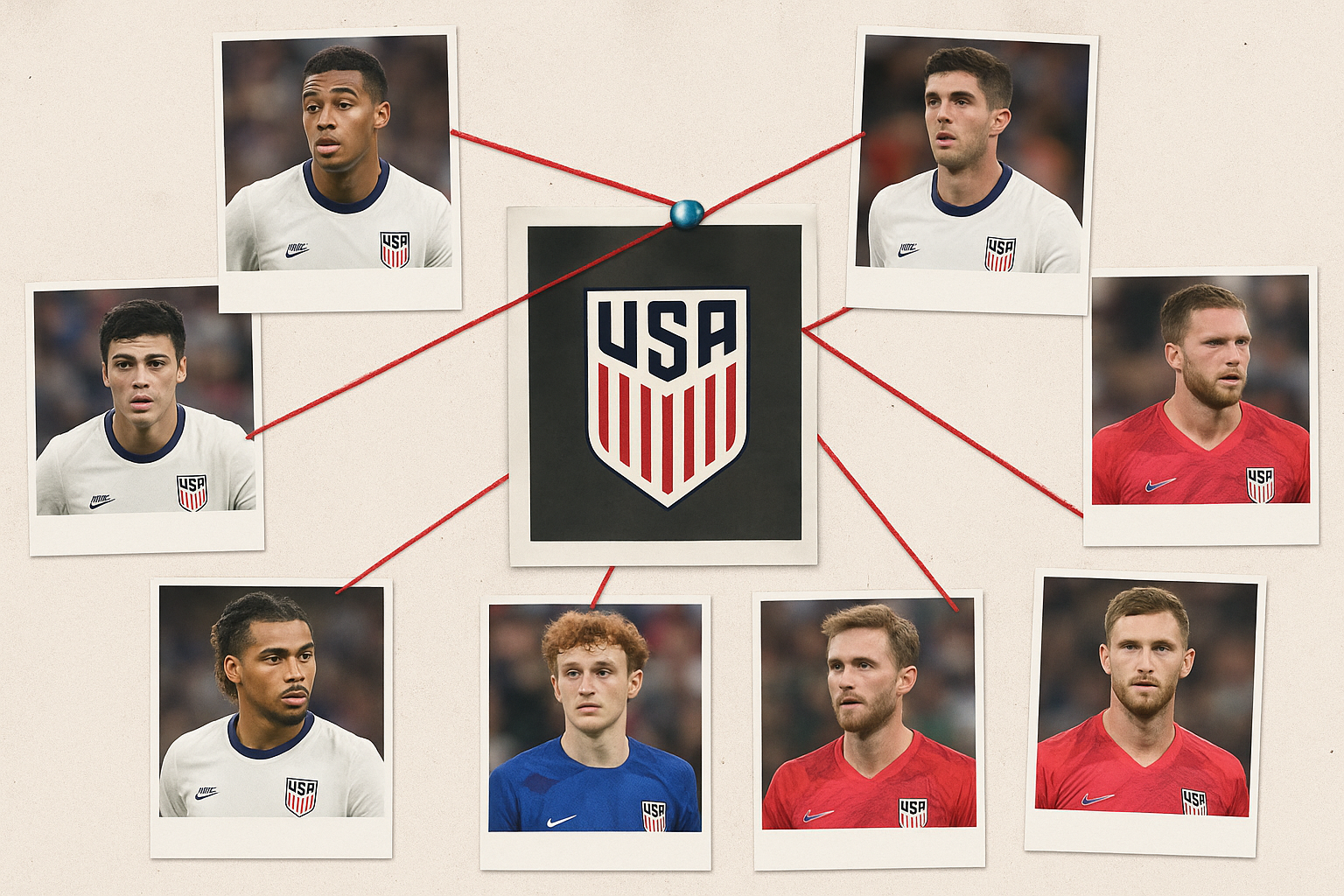
Thomas Deschaine (@uskeeper on X and us_keeper on Instagram)
With the September FIFA window now in the rearview mirror, and only three more windows left before final rosters are set in late May or early June 2026, Mauricio Pochettino has drawn a clear line.
He’s stated that September’s camp was the “last camp to have the possibility for new faces.”
If we take him at his word, the nearly 70 players who’ve been called across six camps and the Gold Cup will form the pool from which he selects the 2026 World Cup squad.
Of the 60 players named to the 2025 Gold Cup provisional roster, only five, Maxi Dietz, Richie Ledezma, Tim Tillman, Caleb Wiley, and Griffin Yow, have yet to appear on a #USMNT roster under Pochettino.
Comparing the 2025 Nations League provisional roster to the Gold Cup list reveals over a dozen different players, raising the question: are these minor differences simply the edges of the player pool Pochettino intends to draw from?
Goalkeepers
Nine goalkeepers have been called into Pochettino’s camps, but it’s clear that Matt Freese is his first-choice right now, with Matt Turner likely the No. 2 as we sit just 10 months from the World Cup.
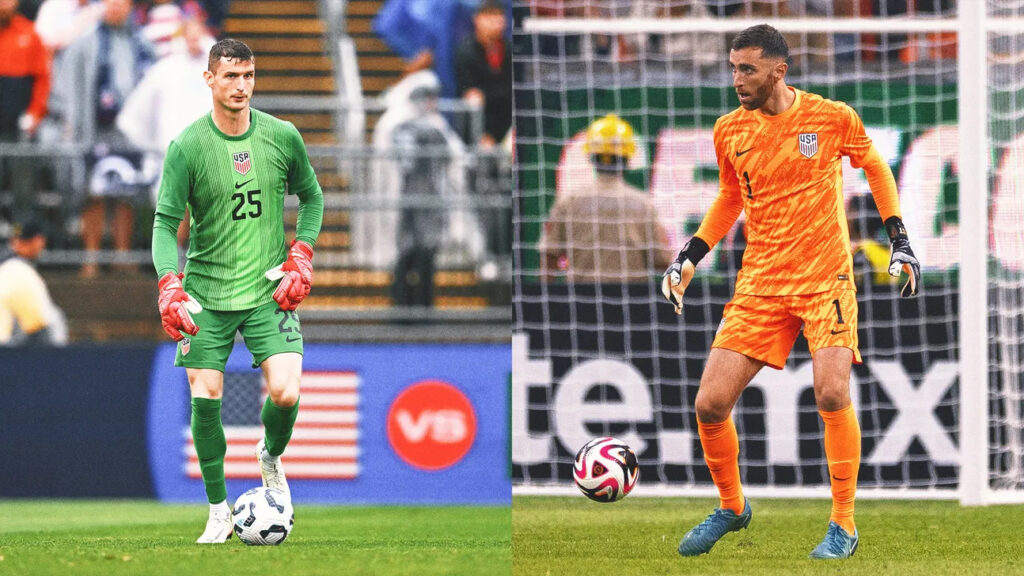
- Chris Brady
- Drake Callender
- Roman Celentano
- Matt Freese
- Ethan Horvath
- Jonathan Klinsmann
- Diego Kochen
- Patrick Schulte
- Zack Steffen
- Matt Turner
Fullbacks
Outside of Sergiño Dest and Antonee Robinson, the USMNT’s fullback depth remains a concern. Pochettino appears high on MLS defenders Alex Freeman and Max Arfsten, while Caleb Wiley, though yet to feature in a USMNT camp but named to recent provisional rosters, could still be on his depth chart.
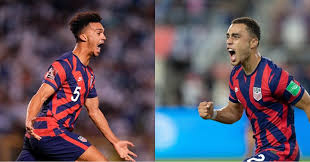
- Max Arfsten
- Sergino Dest
- Alex Freeman
- Marlon Fossey
- DeJuan Jones
- Kristoffer Lund
- Shaquell Moore
- Antonee Robinson
- Joe Scally
- John Tolkin
Centerbacks
Center back remains another position with uncertain depth. Chris Richards and the veteran Tim Ream look like locks for now, leaving three spots up for grabs. If Pochettino opts for a back three, that tactical shift could influence which players ultimately make the cut. Notably, Jackson Ragen and Maxi Dietz are the only center backs from the recent provisional rosters who haven’t been called into a USMNT camp.
- Noahkai Banks
- Tristan Blackmon
- George Campbell
- Cameron Carter-Vickers
- Mark McKenzie
- Tim Ream
- Chris Richards
- Miles Robinson
- Auston Trusty
- Walker Zimmerman
Central Midfielders
The central midfield position is the deepest for the #USMNT, with many players in the pool capable of also playing fullback, center back, or winger. Although Richie Ledezma has primarily played as a right back and right wing-back for his current club and for PSV last season, USMNT coaches view him primarily as a midfielder. This likely explains why he hasn’t yet been called into a USMNT camp.
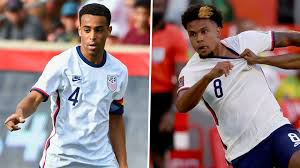
- Tyler Adams
- Sebastian Berhalter
- Gianluca Busio
- Johnny Cardoso
- Ben Cremaschi
- Luca de la Torre
- Emeka Eneli
- Jack McGlynn
- Weston McKennie
- Aidan Morris
- Yunus Musah
- Tanner Tessmann
- Sean Zawadzki
Attacking Midfielders
There are several players at this position who could add real quality and play pivotal roles for the #USMNT at next summer’s World Cup. Gio Reyna remains a major question mark, but his talent is undeniable. With his recent club change, there’s hope he can return to the high level of form we’ve seen from him in the past.
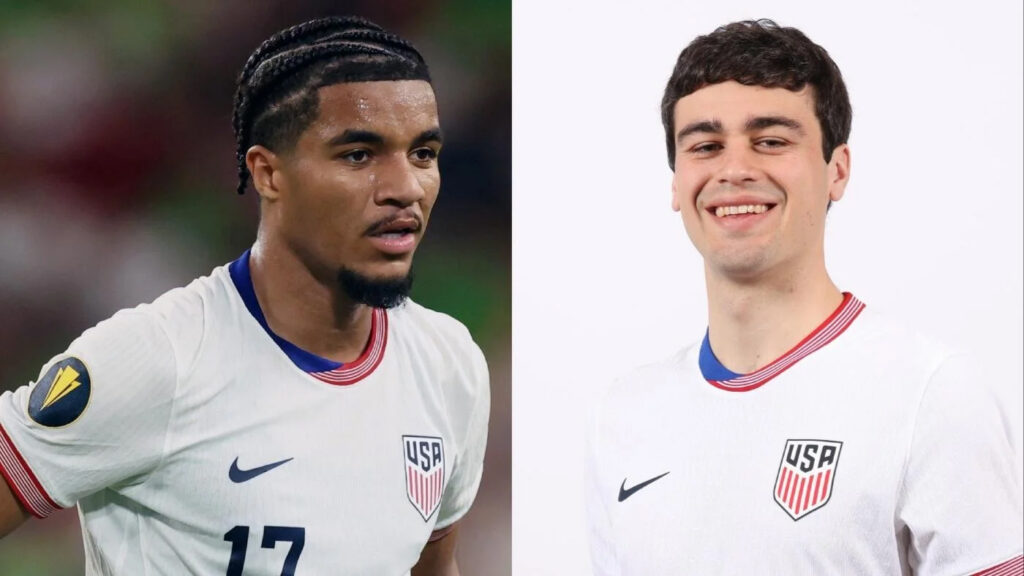
- Brenden Aaronson
- Paxten Aaronson
- Brian Gutiérrez
- Djordje Mihailovic
- Matko Miljevic
- Gio Reyna
- Malik Tillman
Wingers
The winger position remains thin for the #USMNT, though several players there can also slot in as attacking midfielders, strikers, or even fullback. Notably, two young wingers, Cole Campbell and Griffin Yow, appeared on provisional rosters but have yet to be called into any Pochettino camp.
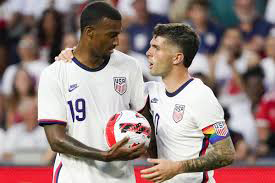
- Cade Cowell
- Diego Luna
- Christian Pulisic
- Quinn Sullivan
- Indiana Vassilev
- Tim Weah
- Haji Wright
- Alejandro Zendejas
Strikers
Another area of concern for the USMNT is striker depth. While the top options have all produced well for their clubs when healthy, injuries have kept the pool thin. If everyone is fit, the primary competition for the starting role likely comes down to three players: Folarin Balogun, Ricardo Pepi, and Josh Sargent. Haji Wright and Tim Weah can also step in as center-forward options if needed.
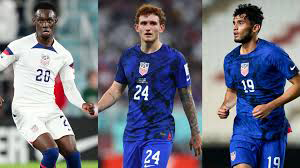
- Patrick Agyemang
- Folarin Balogun
- Damion Downs
- Jesus Ferreira
- Ricardo Pepi
- Josh Sargent
- Brandon Vazquez
- Brian White
Conclusion
It’s tough to read Pochettino’s mindset right now. Many expect fewer MLS players to be called for the October window, partly because the league continues through FIFA dates and the regular season ends mid-October.
Most World Cup rosters largely select themselves, with only a few surprising omissions, think of the 1994 squad, which left out several players many felt deserved a spot.
But with Pochettino still showing a shaky grasp of the USMNT player pool, this cycle could produce more notable snubs than ever, though there’s still time for him to get it right.
Club News
From Louisville to Lisbon: Joshua Wynder’s Journey with S.L. Benfica
Published
5 months agoon
June 13, 2025By
Zach McCabe
The current state of the USMNT has been at an all-time low since Couva in 2017. One of the positions in dire situation is Center Back. Tim Ream will be 38 by the time of the 2026 World Cup. Chris Richards has too many highs and lows and has not shown his club form with the US. Cameron Carter-Vickers and Auston Trusty have yet to perform for the national team. Miles Robinson, despite what many MLS fans want to believe, is not good enough and makes too many errors, like the second Turkish goal on June 7th, 2025. Walker Zimmerman has one World Cup left in him and he has a history of making critical errors as well, like the penalty against Gareth Bale in the 2022 World Cup. Lastly, Mark McKenzie has improved his game since his move to Toulouse, but he is lacking the deserved opportunities and a good partnership.
Our U20 CBs will need to be called up sooner rather than later, either before or immediately after the 2026 World Cup. The top 3 prospects by fans and analysts are Noahkai Banks, Matai Akinmboni, and Joshua Wynder. Of the three, Joshua Wynder is the oldest at 20 years old and is part of a club that is world-renowned for their development, S.L. Benfica.
How did Wynder manage to accomplish such a move from Louisville City in the USL Championship to Benfica? To summarize, Wynder had a breakout season for Lou City at 17 years old in 2022, so much so that he was included in the US U20 World Cup team in 2023.

Wynder secured a spot to go on trial at Benfica and passed. On June 8th, 2023, Benfica officially acquired Joshua Wynder from Lou City for a record-breaking $1.2 million transfer fee, which still stands today.

Benfica registered Wynder with the second team for the 2023/2024 season, who participate in Liga Portugal 2. Due to Portuguese rules (players play in the youth system until they are 19 years old), he spent the season with Benfica’s UEFA Youth League team and U23 team and only received 21 minutes with the B team until a season-ending injury. What began as a promising start, with the support of the fans, was cut short after just six matches. The following season went according to plan for Wynder. Wynder became a consistent starter for the B team where he started in 29 matches and appeared in a total of 31 matches. He also scored four goals, all headers from corners.

His success with the B team made him a fan-favorite and several calls to be called up to the first team by fans on social media. That day came on April 9th, 2025, when he made the team sheet for Benfica’s Taça de Portugal Semi-Final match against FC Tirsense. Wynder made his first team debut when he was subbed in at the 76th minute mark of that match. He made a following appearance on the bench for the first team in their second leg match against FC Tirsense.
As early as November 27, 2024, it was reported by Glorioso 1904 that Joshua Wynder had gained the attention of the Benfica manager, Bruno Lage. The report further said that Wynder was becoming an option for the next season’s first team. A similar report surfaced on March 25, 2025, by Record, in Portugal, that Wynder is on track to be with the first team for the 2025/2026 season. That day may be coming sooner rather than later. Joshua Wynder will be joining Benfica on their 2025 Club World Cup campaign. This will be a true test for him to prove to Bruno Lage that he is ready to be part of the first team for the upcoming 2025/2026 Liga Portugal and UEFA Champions League season. If he is given serious minutes with the first team and performs, Joshua Wynder needs to be considered for the 2026 World Cup or immediately following the World Cup.

Benfica is in Group C of the Club World Cup with Auckland City, Bayern München, and Boca Juniors. Their first match is against Boca Juniors, 33-time Argentine champions, on June 16th. Game two is on June 20th against 10-time New Zealander champions, Auckland City FC. Lastly, their 3rd group stage match is against the 6-time UEFA Champions League winners, Bayern München, on June 24th.
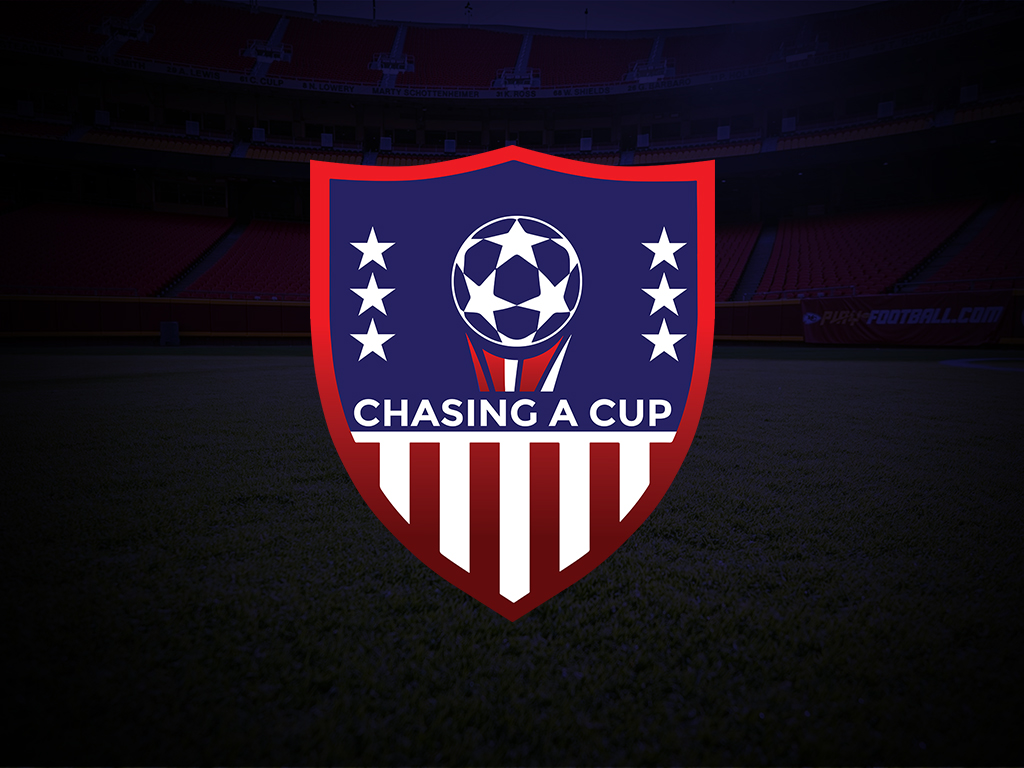

USL’s American Soccer Dream

From Maradona to Messi

One Home or Many? The Debate Over a Primary Venue for U.S. Soccer

Trending
-

 Club News1 year ago
Club News1 year agoAmerican Transfers: Stock Up & Stock Down
-
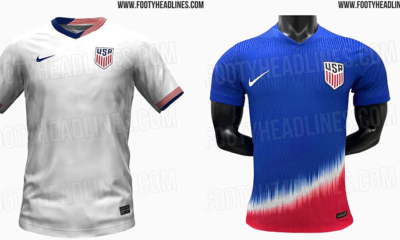
 USMNT2 years ago
USMNT2 years agoUSMNT Kits Come in Different Styles and Colors
-

 Club News6 years ago
Club News6 years agoJulian Vincente Araujo
-
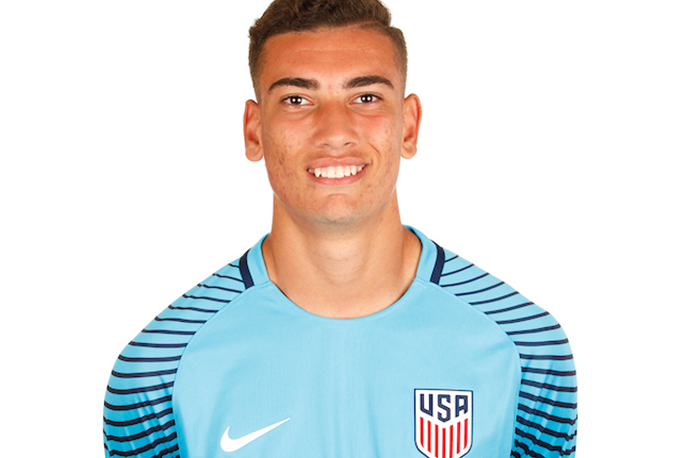
 Club News5 years ago
Club News5 years agoCJ dos Santos, Benfica
-

 USMNT5 years ago
USMNT5 years agoA Hidden Gem: Barça Residency Academy
-
USMNT3 years ago
World Cup Format History
-

 USMNT2 years ago
USMNT2 years agoIs the MLS Specifically Targeting Expansion to USL Cities?
-
USMNT6 years ago
MLS Quota

